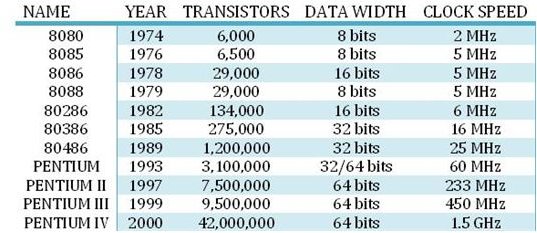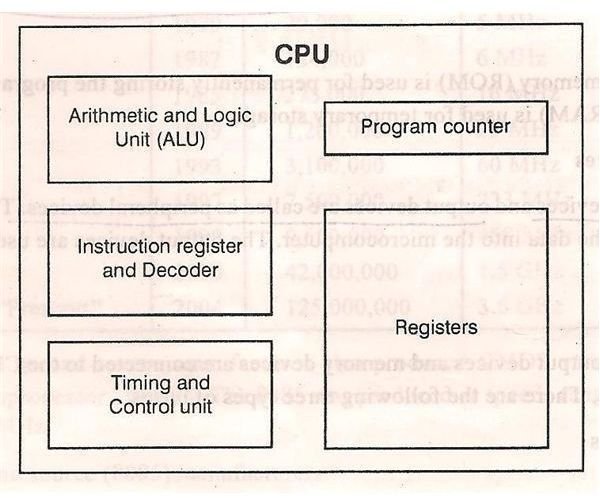Brief history of microprocessors - Learn how these microchips evolved over a period of time
Introduction
The world of electrical and electronics is quite closely related, yet sometimes far apart in terms of size and magnitude. Whereas electrical equipment could be mostly bulky electrical motors of various types, the electronic items are normally in the shorter version. In this article we will study one such aspect namely the microprocessor which, apart from several other functions, also serves as the heart of the computer on which you are probably reading this article.
The microprocessor forms the brain of the Central Processing Unit (CPU). Microprocessor is an engine which can compute various operations fabricated on a single chip. The internal architecture of microprocessor determines what operations can be performed on a microprocessor and how it can be performed. Let us take a look at a brief history of the microprocessor and discuss how the microprocessors have evolved over the past years.
Evolution of Microprocessor
The first microprocessor was introduced in the year 1971. It was introduced by Intel and was named Intel 4004.
Intel 4004 is a 4 bit microprocessor and it was not a powerful microprocessor. It can perform addition and subtraction operation on 4 bits at a time.
However it was Intel’s 8080 was the first microprocessor to make it to Home computers. It was introduced during the year 1974 and it can perform 8 bit operations. Then during the year 1976, Intel introduced 8085 processors which is nothing but an update of 8080 processors.8080 processors are updated by adding two Enable/Disable Instructions, Three added interrupt pins and serial I/O pins.
Intel introduced 8086 pins during the year 1976. The major difference between 8085 and 8086 processor is that 8085 is an 8 bit processor, but 8086 processor is a 16 bit processor.
The greatest advantage of the above processors are that it do not contain Floating point instructions. Here floating point refers to the radix point or decimal point. For example: 123.456 is a floating point representation. Processors such as 8085 and 8086 do not support such representations and instructions.

Intel later introduced 8087 processor which was the first math co-processor and later the 8088 processor which was incorporated into IBM personal computers.
As the years progressed lots of processors from 8088,80286,80386,80486,Pentium II, Pentium III, Pentium IV and now Core2Duo,Dual Core and Quad core processors are the latest in the market.

Apart from Intel, there are some other manufacturers who produce the CMOS version of 8085 microprocessor. Such manufacturers are called second source manufacturers.
The second source manufacturers include:
AMD
Mitsubishi
NEC
OKI
Toshiba
Siemens
CMOS stands for COMPLEMENTARY METAL OXIDE SEMICONDUCTOR. It is a technology used in Microprocessors and Microcontrollers for making Integrated circuits.
The devices which are made of CMOS have high immunity towards noise and the static power consumption is low.
Basic Microprocessor
A basic microprocessor requires certain elements to perform some operation. To perform an operation microprocessor requires:
· Registers
· Arithmetic and Logic Unit (ALU)
· Control Logic
· Instruction register
· Program counter
· Bus.
Arithmetic and Logic Unit:
It is the computational unit of microprocessor. It performs arithmetic and logical operations on various data. Whenever there is a need to perform an operation on a data then the data is sent to ALU to perform the necessary function.
Registers:
Registers may be called as the Internal Storage device. Input data, Output data and various other binary data is stored in this unit for further processing.
Control Unit:
Control unit as the name specifies controls the flow of data and signals in the microprocessor. It generates the necessary control signals for various data that are fed to microprocessor.
Instruction Register:
All the instructions that are fetched from memory are located in the Instruction register. So the Instruction register is used to store various information’s that microprocessor requires in order to carry out an operation.
Program Counter (PC):
Program counter stores the address of the next instruction to be executed. It is usually denoted as PC.

Advantages of Microprocessor:
It is cheap and cost of manufacture is low.
They are very small in size.
High Reliability
High Versatility
Power consumption is very low.
